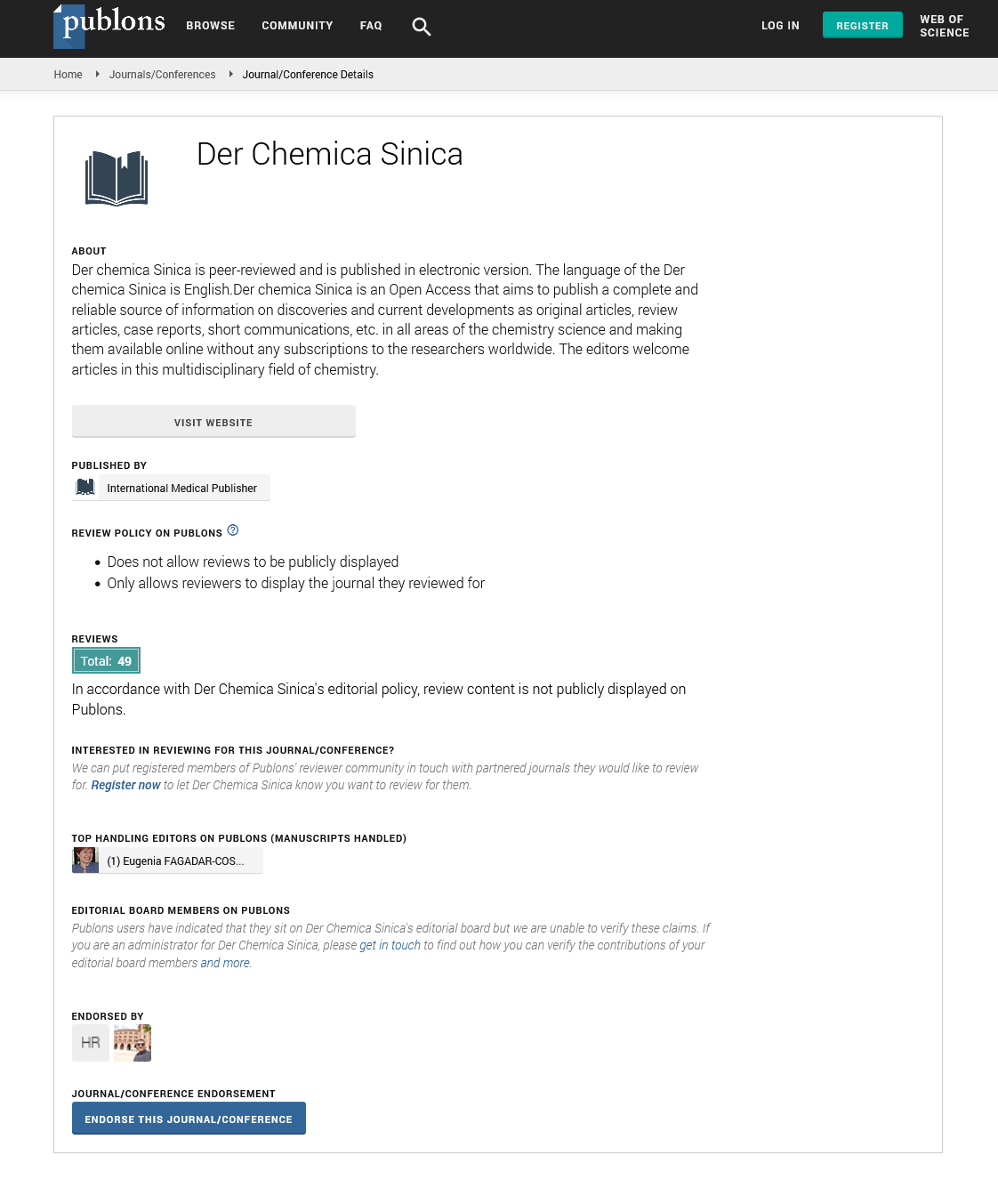ISSN : 0976-8505
Der Chemica Sinica
Abstract
Kinetic and Equilibrium Studies of the Adsorption of Lead(II) and Nickel(II) ions from aqueous solutions on Activated Carbon Prepared from Maize Cob
A carbonaceous adsorbent prepared from maize cob by acid treatment has been tested for its efficiency in removing Pb(II) and Ni(II) ions. The effects of contact time, initial concentration and pH have been studied. The adsorption followed Pseudo second order reaction equation and the rate is mainly that of intra-particle diffusion. The Freundlich and the Langmuir models were applied to the equilibrium data. The adsorption capacity (Qm) obtained from Langmuir isotherm plots for Lead and Nickel ions were 3.150 and 4.70 (mg/g) respectively. The separation factors, RL, for Pb2+ (0.0576) and Ni2+ (0.2458) were less than unity, indicating that maize cob biomass is an excellent adsorbent for the two metal ions. The adsorption coefficient, b, which is related to the apparent energy of adsorption for Pb2+ (0.5453L/mg) was greater than that of Ni2+ (0.1023L/mg). This showed that the energy of adsorption is not favourable to Pb2+. Ionic radius influences the rate of adsorption of metal ion migration to the adsorbent surface. The critical pH values were both found to be 5.0 for the metal ions.
Author(s): Nale, B. Y., Kagbu, J. A, Uzairu A, Nwankwere E. T, Saidu S and Musa H.
Abstract | PDF
Share This Article
Google Scholar citation report
Citations : 6019
Der Chemica Sinica received 6019 citations as per Google Scholar report
Der Chemica Sinica peer review process verified at publons
Abstracted/Indexed in
- Google Scholar
- Open J Gate
- Genamics JournalSeek
- China National Knowledge Infrastructure (CNKI)
- Directory of Research Journal Indexing (DRJI)
- Publons
- MIAR
- International Committee of Medical Journal Editors (ICMJE)
- Serials Union Catalogue (SUNCAT)
- Geneva Foundation for Medical Education and Research
- Secret Search Engine Labs
- Euro Pub
- CAS (Chemical Abstracting Services)
- University of Barcelona
Open Access Journals
- Aquaculture & Veterinary Science
- Chemistry & Chemical Sciences
- Clinical Sciences
- Engineering
- General Science
- Genetics & Molecular Biology
- Health Care & Nursing
- Immunology & Microbiology
- Materials Science
- Mathematics & Physics
- Medical Sciences
- Neurology & Psychiatry
- Oncology & Cancer Science
- Pharmaceutical Sciences
